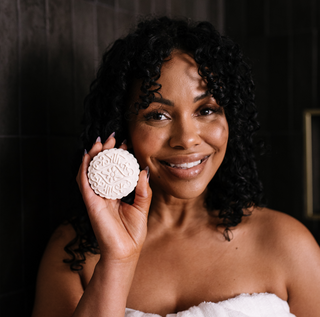In the remote mountainous regions of Southeast Asia, nestled in the breathtaking landscapes of China and Vietnam, lies the Red Yao tribe, a community with a cultural heritage as vibrant as their striking red traditional attire. Beyond their distinctive appearance, the Red Yao are renowned for their luscious, floor-length hair, and the secrets behind their hair care practices have intrigued researchers and beauty enthusiasts alike. In this exploration, we delve into the unique traditions of the Red Yao tribe, unraveling the mysteries of their long, healthy locks.
The Cultural Tapestry of the Red Yao Tribe:
The Red Yao people, also known as the Dàyáo or Dao, have a rich cultural tapestry that spans centuries. Living in harmony with nature, the tribe is known for its sustainable agricultural practices, traditional festivals, and distinctive customs. The Red Yao's connection to their surroundings is reflected in their holistic approach to beauty, which includes their renowned hair care methods.
The Red Yao Attire: A Symbol of Identity:
At the heart of Red Yao identity is their traditional attire, which features vibrant shades of red. This symbolic color represents good luck, happiness, and prosperity in their culture. The intricate designs and patterns of their clothing are a visual expression of the tribe's unity and pride, echoing through generations.
Long Hair as a Cultural Symbol:
One of the most visually striking aspects of the Red Yao is the remarkable length of their hair. Both men and women in the tribe grow their hair long, with some individuals boasting hair that reaches the floor. In Red Yao culture, long hair is considered a symbol of good fortune, longevity, and a connection to the spiritual realm. The care and dedication given to maintaining their hair reflect the tribe's deep respect for tradition and nature.
Sustainable Living and Hair Care:
The Red Yao's commitment to sustainable living extends to their hair care practices. The tribe relies on natural resources sourced from their surroundings, such as indigenous herbs, plants, and local spring water. The Red Yao have perfected a blend of these natural elements to create hair care concoctions that promote hair strength, prevent breakage, and maintain the vibrant red hue.
Secrets of Red Yao Hair Care:
Herbal Elixirs:
The Red Yao use a variety of herbs, including ginseng, hibiscus, and goji berries, to create herbal infusions for their hair. These elixirs are believed to nourish the scalp, stimulate hair growth, and enhance the natural shine of the hair.
Rice Water Rinse:
A practice handed down through generations, the Red Yao use fermented rice water as a hair rinse. Rich in vitamins and minerals, rice water is thought to strengthen hair strands, reduce split ends, and contribute to the overall health of their hair.
Wooden Combs and Rituals:
Wooden combs, crafted from sandalwood or peach wood, play a crucial role in Red Yao hair care. The tribe members believe that these combs help distribute natural oils evenly, preventing hair damage. Additionally, the act of combing is considered a ritual that fosters a sense of community and bonding.
Conclusion:
As we unravel the cultural heritage of the Red Yao tribe, it becomes evident that their long, vibrant hair is more than a visual spectacle—it's a testament to their deep-rooted connection to nature and tradition. The Red Yao's sustainable living practices, herbal elixirs, rice water rinses, and ceremonial combing rituals contribute to the health and beauty of their hair, providing valuable insights for those seeking natural and holistic approaches to hair care. Through this exploration, we celebrate not only the aesthetic allure of the Red Yao's long locks but also the wisdom passed down through generations, encapsulating the essence of their cultural heritage.
The Cultural Tapestry of the Red Yao Tribe:
The Red Yao people, also known as the Dàyáo or Dao, have a rich cultural tapestry that spans centuries. Living in harmony with nature, the tribe is known for its sustainable agricultural practices, traditional festivals, and distinctive customs. The Red Yao's connection to their surroundings is reflected in their holistic approach to beauty, which includes their renowned hair care methods.
The Red Yao Attire: A Symbol of Identity:
At the heart of Red Yao identity is their traditional attire, which features vibrant shades of red. This symbolic color represents good luck, happiness, and prosperity in their culture. The intricate designs and patterns of their clothing are a visual expression of the tribe's unity and pride, echoing through generations.
Long Hair as a Cultural Symbol:
One of the most visually striking aspects of the Red Yao is the remarkable length of their hair. Both men and women in the tribe grow their hair long, with some individuals boasting hair that reaches the floor. In Red Yao culture, long hair is considered a symbol of good fortune, longevity, and a connection to the spiritual realm. The care and dedication given to maintaining their hair reflect the tribe's deep respect for tradition and nature.
Sustainable Living and Hair Care:
The Red Yao's commitment to sustainable living extends to their hair care practices. The tribe relies on natural resources sourced from their surroundings, such as indigenous herbs, plants, and local spring water. The Red Yao have perfected a blend of these natural elements to create hair care concoctions that promote hair strength, prevent breakage, and maintain the vibrant red hue.
Secrets of Red Yao Hair Care:
Herbal Elixirs:
The Red Yao use a variety of herbs, including ginseng, hibiscus, and goji berries, to create herbal infusions for their hair. These elixirs are believed to nourish the scalp, stimulate hair growth, and enhance the natural shine of the hair.
Rice Water Rinse:
A practice handed down through generations, the Red Yao use fermented rice water as a hair rinse. Rich in vitamins and minerals, rice water is thought to strengthen hair strands, reduce split ends, and contribute to the overall health of their hair.
Wooden Combs and Rituals:
Wooden combs, crafted from sandalwood or peach wood, play a crucial role in Red Yao hair care. The tribe members believe that these combs help distribute natural oils evenly, preventing hair damage. Additionally, the act of combing is considered a ritual that fosters a sense of community and bonding.
Conclusion:
As we unravel the cultural heritage of the Red Yao tribe, it becomes evident that their long, vibrant hair is more than a visual spectacle—it's a testament to their deep-rooted connection to nature and tradition. The Red Yao's sustainable living practices, herbal elixirs, rice water rinses, and ceremonial combing rituals contribute to the health and beauty of their hair, providing valuable insights for those seeking natural and holistic approaches to hair care. Through this exploration, we celebrate not only the aesthetic allure of the Red Yao's long locks but also the wisdom passed down through generations, encapsulating the essence of their cultural heritage.

